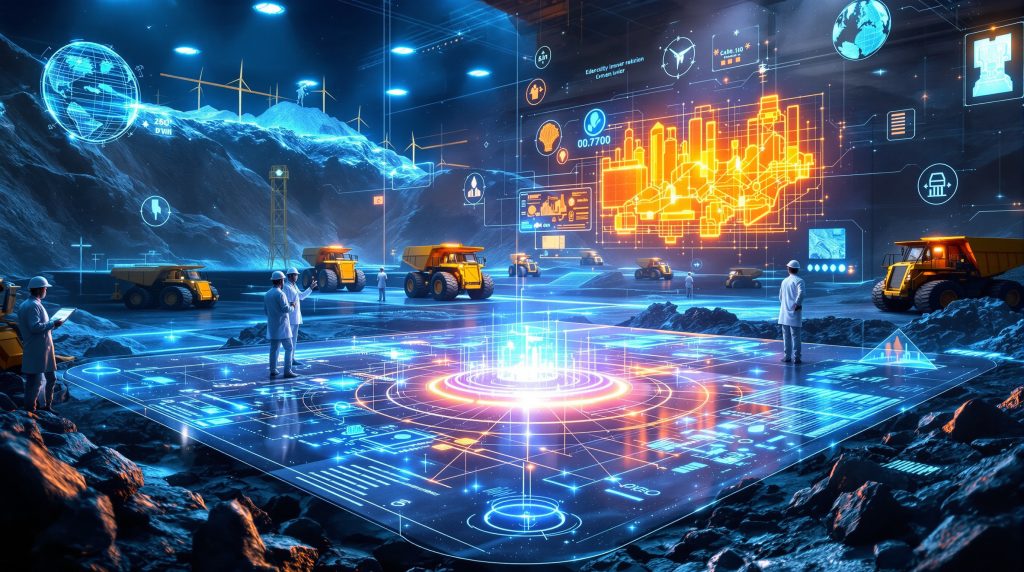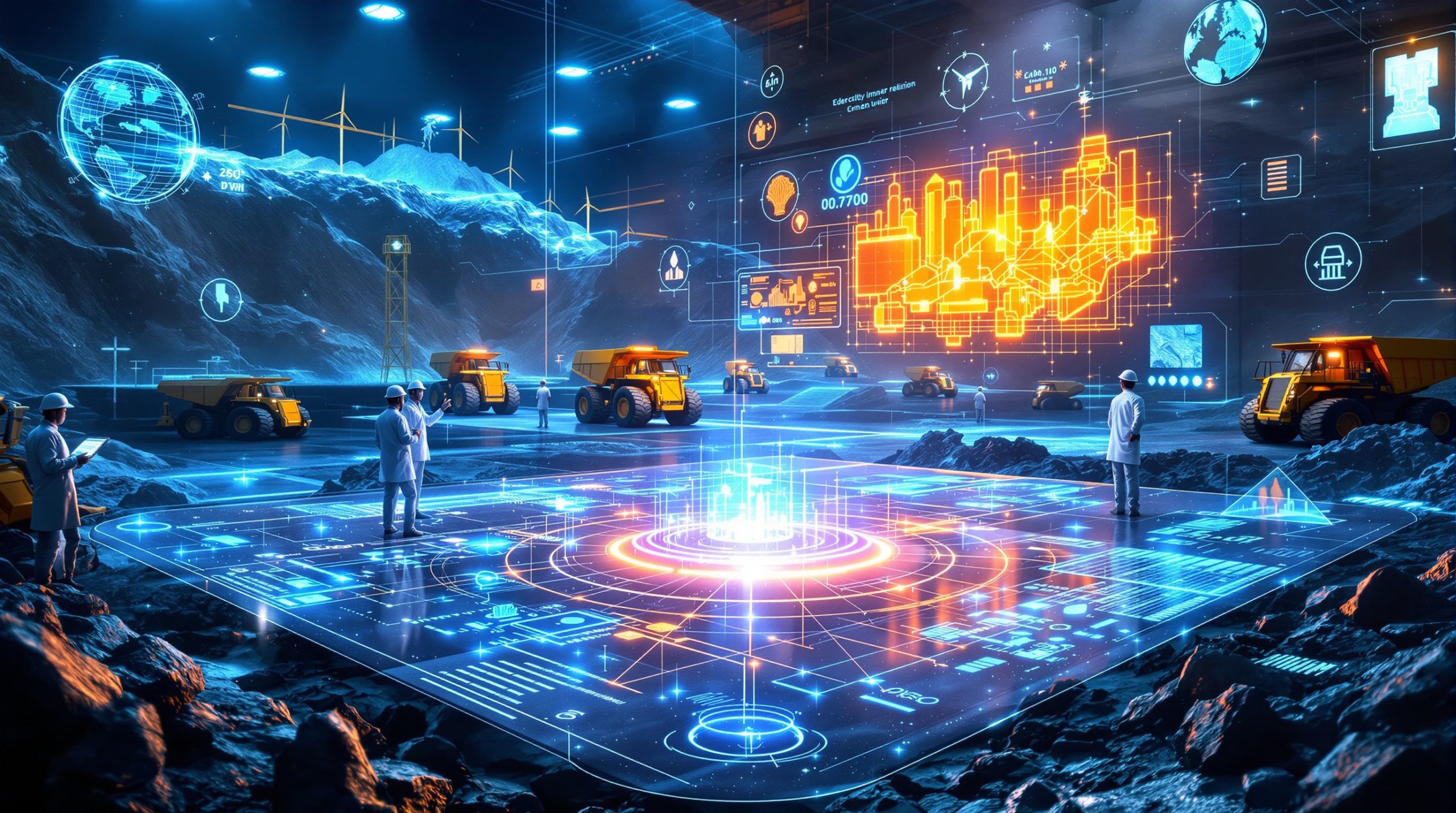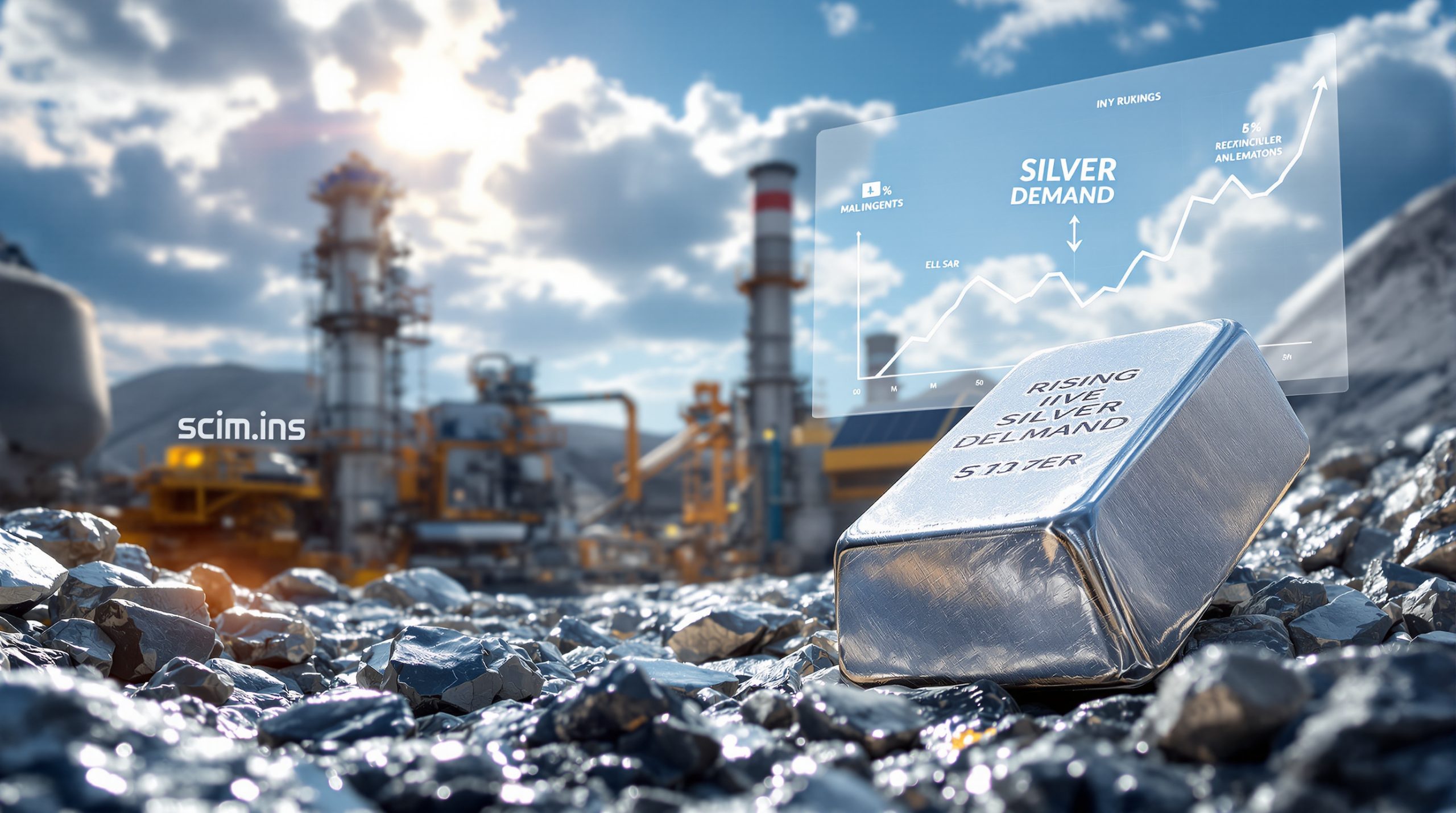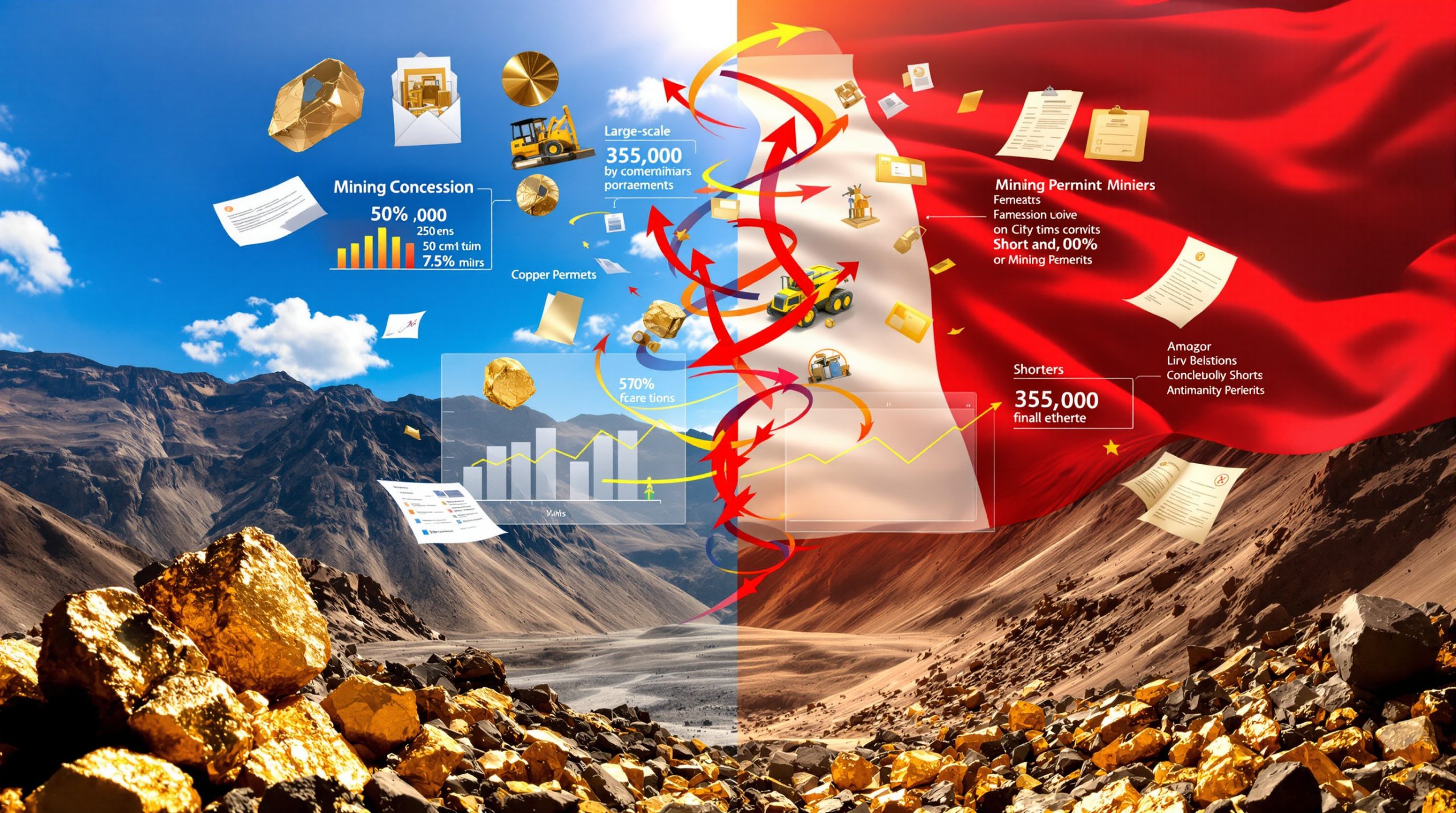Disruptive Research in the Mining Industry: Transforming Extraction Through Innovation
The mining sector is experiencing unprecedented transformation through disruptive research initiatives that challenge conventional practices. These innovations are reshaping how minerals are discovered, extracted, processed, and managed throughout their lifecycle. From AI-powered exploration to autonomous operations and circular economy approaches, disruptive research is addressing the industry's most pressing challenges while creating new opportunities for efficiency, sustainability, and value creation.
Mining industry challenges in 2025 include resource and reserve depletion and a lack of new projects, according to findings from the Mintek-Science Convention of Innovators Disruptive Research Roundtable (Mining Weekly, October 2, 2025). Industry leaders emphasize that these challenges, particularly in Africa, are not insurmountable but rather issues that can be resolved through strategic innovation and following industry evolution trends.
Key Drivers of Disruptive Mining Research
- Resource depletion and declining ore grades
- Environmental and social license pressures
- Digital transformation opportunities
- Changing global mineral demands
- Competitive pressures in international markets
- Need for improved safety and operational efficiency
What Technologies Are Transforming Mineral Exploration and Discovery?
Innovative exploration technologies are fundamentally changing how mining companies identify and assess potential mineral deposits. By leveraging advanced remote sensing, artificial intelligence, and computational modeling, companies can discover resources that would have remained hidden using conventional methods.
Advanced Sensing and Remote Exploration
Remote sensing technologies and satellite imagery analysis have evolved dramatically, enabling mining companies to identify potential deposits with greater accuracy while minimizing physical disturbance. Hyperspectral imaging can now detect mineral signatures from satellite platforms, while drone-based magnetic and gravitational surveys provide high-resolution data at a fraction of traditional exploration costs.
These technologies allow for preliminary site assessment without extensive ground disturbance, supporting both environmental objectives and cost efficiency. The integration of multiple sensing technologies creates comprehensive datasets that reveal subtle geological patterns invisible to single-instrument approaches.
AI-Powered Resource Identification
Machine learning algorithms are revolutionizing how geological data is interpreted. These systems can analyze vast datasets from historical exploration activities, identify patterns invisible to human geologists, and predict deposit locations with increasing accuracy. This approach has led to the discovery of previously overlooked resources and the reevaluation of areas once considered depleted.
Industry experts emphasize the need for "bold, forward-looking strategies" rather than cautious incremental steps in technological adoption. According to Wouter Broodryk, Impala Platinum corporate processing specialist, the industry needs to ask: "What if the mining industry could reinvent itself – not just to survive, but lead the future?" (Mining Weekly, October 2, 2025). Furthermore, AI in mining operations is transforming traditional exploration approaches.
Predictive Modeling for Resource Assessment
Advanced computational modeling now allows for more accurate resource estimation and mine planning. These models integrate multiple data sources—geological, environmental, economic—to provide comprehensive assessments of deposit viability and optimal extraction approaches, reducing investment risks and improving project economics.
The evolution of these models from purely geological tools to integrated decision support systems represents a significant advancement in pre-mining planning. Modern systems can simulate multiple extraction scenarios and predict outcomes across operational, environmental, and financial dimensions.
How Is Automation Disrupting Mining Operations?
The integration of autonomous systems across mining operations is perhaps the most visible manifestation of disruptive research in the sector. From equipment operation to process control and decision-making, automation technologies are transforming productivity, safety, and operational resilience.
Autonomous Mining Equipment
The deployment of self-operating machinery represents one of the most visible disruptions in mining operations. Autonomous haulage systems, drilling equipment, and loading machinery now operate continuously with minimal human intervention, dramatically improving productivity while reducing safety risks.
These systems offer particular advantages in hazardous environments and remote locations, where human operators face significant challenges. The continuous operation capability of autonomous equipment can increase utilization rates by up to 30% compared to manually operated alternatives.
Remote Operations Centers
Centralized control facilities now enable mining companies to monitor and manage multiple operations from a single location. These centers collect real-time data from sensors throughout mining operations, allowing for immediate response to changing conditions and optimized decision-making across entire mining portfolios.
The transition from site-based to centralized operations management has significant implications for workforce development, safety protocols, and operational efficiency. Remote centers allow companies to deploy specialized expertise across multiple operations simultaneously while reducing personnel exposure to site-based risks.
Digital Twins and Simulation
Virtual replicas of physical mining operations provide unprecedented visibility into operational dynamics. These digital twins enable operators to test process changes, predict maintenance needs, and optimize resource utilization without disrupting actual production. The technology has proven particularly valuable for underground operations where visibility and access present significant challenges.
These systems integrate historical performance data, real-time monitoring information, and predictive analytics to create comprehensive operational models. By simulating operational changes before implementation, companies can identify potential issues and optimize processes without risking production disruptions.
What Sustainable Innovations Are Emerging from Mining Research?
Sustainability-focused research is addressing the mining industry's most significant environmental challenges. From water conservation to renewable energy integration and circular economy approaches, these innovations are transforming the sector's environmental footprint while often improving operational economics.
Water Conservation Technologies
Water scarcity represents a critical constraint for mining operations globally. Disruptive research has yielded significant advances in water recycling, dry processing techniques, and precision application systems that dramatically reduce freshwater consumption. These innovations not only address environmental concerns but also improve operational resilience in water-stressed regions.
Leading operations have achieved up to 85% water recycling rates through integrated water management systems. These approaches combine physical treatment processes with biological remediation techniques and digital monitoring systems to maximize conservation while ensuring water quality standards are maintained.
Energy Efficiency and Renewable Integration
Mining operations traditionally consume enormous amounts of energy, often from carbon-intensive sources. Research into energy-efficient processing, renewable power integration, and intelligent energy management systems is transforming the sector's environmental footprint while reducing operational costs. Several major mining operations now operate partially or entirely on renewable energy.
The development of microgrid technologies has been particularly significant for remote mining operations, allowing for reliable power supply in locations where grid connection is impractical or prohibitively expensive. These systems typically combine solar photovoltaics, wind generation, battery storage, and backup diesel generation to ensure continuous operations.
Circular Economy Approaches
Rather than following the traditional linear model of extract-process-discard, innovative mining operations are adopting circular approaches that maximize resource recovery and minimize waste. Technologies for recovering valuable materials from tailings, repurposing waste streams, and designing for end-of-life recovery are creating new value streams while addressing environmental concerns.
Tebogo Kale, CEO of Gravitas Minerals, highlighted that circular mining approaches present "endless opportunities" compared with linear mining methods. Kale noted that South Africa's mining industry has opportunities to "go further than just extracting materials and to use it for secondary industry" (Mining Weekly, October 2, 2025). In addition, the sustainable mining transformation is rapidly becoming a cornerstone of modern operations.
How Is Data Analytics Transforming Mining Decision-Making?
Advanced analytics capabilities are fundamentally changing how mining operations make decisions. From equipment maintenance to production optimization and supply chain management, data-driven mining operations are improving efficiency, reducing costs, and enhancing operational resilience.
Predictive Maintenance Systems
Equipment failures represent a significant cost and safety risk in mining operations. AI-powered predictive maintenance systems analyze operational data to identify potential failures before they occur, allowing for planned interventions that minimize downtime and prevent catastrophic failures. These systems have reduced maintenance costs by up to 30% while improving equipment availability.
By integrating sensor data from operational equipment with historical maintenance records and equipment specifications, these systems can identify subtle patterns that indicate developing problems. This allows maintenance teams to address issues during planned downtime rather than responding to unexpected failures.
Real-Time Production Optimization
Advanced analytics platforms now enable continuous optimization of mining and processing operations. These systems monitor thousands of variables simultaneously, identifying opportunities to improve recovery rates, reduce energy consumption, and maintain product quality. The resulting efficiency gains have transformed the economics of previously marginal operations.
The integration of process control systems with production planning and financial modeling creates comprehensive operational management platforms. These integrated systems allow operations to adapt quickly to changing market conditions, input costs, or operational constraints.
Supply Chain Intelligence
Mining operations depend on complex supply networks for both inputs and product distribution. Disruptive research in supply chain analytics has yielded systems that can predict disruptions, optimize inventory levels, and coordinate logistics across global operations. These capabilities have proven particularly valuable during recent global supply chain disruptions.
Modern supply chain intelligence systems combine internal operational data with external market information, logistics tracking, and even weather forecasts to provide comprehensive supply risk assessment. This enables proactive management of potential disruptions rather than reactive responses to supply chain failures.
What Are the Social Innovations in Mining Research?
While technological innovations often receive the most attention, social innovations are equally important in transforming the mining sector. From community engagement to worker safety and skills development, these innovations are addressing the human dimensions of mining operations.
Community Engagement Technologies
Digital platforms now enable more transparent and inclusive engagement with communities affected by mining operations. These systems provide real-time environmental monitoring data, facilitate dialogue between companies and stakeholders, and document compliance with social commitments. This transparency has improved relationships with host communities and strengthened social license to operate.
The evolution of these platforms from one-way information delivery to interactive engagement systems represents a significant advancement in community relations. Modern approaches integrate environmental monitoring, employment information, local procurement data, and development project tracking to provide comprehensive community information access.
Worker Safety Innovations
Wearable technologies, proximity detection systems, and environmental monitoring networks are transforming worker safety in mining environments. These technologies provide early warning of hazardous conditions, prevent equipment-personnel interactions, and enable rapid response to emergencies. The resulting safety improvements have reduced incident rates while improving workforce retention.
The integration of these safety technologies with training systems and operational procedures creates comprehensive safety management systems. This integrated approach addresses both immediate hazard prevention and longer-term safety culture development.
Skills Development and Knowledge Transfer
As mining operations become increasingly technical, research into effective knowledge transfer and skills development has gained importance. Virtual reality training systems, augmented reality maintenance guides, and AI-assisted decision support tools are helping workforces adapt to technological change while preserving critical operational knowledge.
Dr. Palesa Mothapo, Nelson Mandela Metropolitan University research support and management director, highlighted "sobering unemployment statistics, with many graduates not finding work post qualification," underscoring the skills and opportunities gap in the sector. Mothapo called for "a change in the teaching approach" to equip students with skills to drive change, moving away from "research for the sake of research" (Mining Weekly, October 2, 2025).
What Research Partnerships Are Driving Mining Innovation?
Collaborative research approaches are accelerating innovation in the mining sector. By combining diverse expertise, resources, and perspectives, these partnerships are addressing complex challenges that exceed the capabilities of individual organizations.
Industry-Academic Collaborations
Strategic partnerships between mining companies and research institutions are accelerating the development and implementation of disruptive technologies. These collaborations combine industry knowledge with academic expertise, creating innovation ecosystems that address practical challenges while advancing fundamental understanding.
According to Dr. Mothapo, higher education can enhance opportunities by "aligning academic programmes with labour market demand, fostering innovation, modernising curricula and promoting stronger partnerships between academia and industry" (Mining Weekly, October 2, 2025). Tebogo Kale emphasized that partnerships with academia would "build a talent pipeline ensuring digital literacy through upskilling programmes" (Mining Weekly, October 2, 2025).
Cross-Sector Innovation Transfer
Mining is increasingly benefiting from innovations developed in other sectors. Technologies from aerospace, advanced manufacturing, and biotech are finding applications in mining contexts, often with transformative results. This cross-pollination is expanding the range of solutions available to mining challenges.
The adaptation of technologies from other sectors often requires significant research to address mining-specific requirements. This adaptation process itself represents an important innovation domain, with specialized research teams focusing on cross-sector technology transfer.
Government-Industry Research Initiatives
Public-private research partnerships are addressing challenges that exceed the capabilities of individual companies. These initiatives focus on pre-competitive research with broad applicability, such as environmental restoration techniques, community development approaches, and fundamental process improvements.
Kondwani Banda, BEH project development manager, pointed out that funders "play a critical role in the entire value chain, from lab to market" including in technology derisking, attracting additional capital, and shaping national priorities (Mining Weekly, October 2, 2025).
How Are Mineral Processing Methods Being Disrupted?
Processing innovations are transforming how extracted materials are converted into valuable products. From selective extraction to biological processing and in-situ recovery, these approaches are reducing environmental impacts while improving recovery rates and economic performance.
Precision Extraction Technologies
Traditional mineral processing often involves bulk treatment methods with significant waste generation. New approaches enable more selective extraction, targeting specific minerals while leaving unwanted materials in place. These technologies reduce energy consumption, water use, and waste production while improving recovery rates.
The development of sensor-based sorting systems has been particularly significant in this domain. These systems can identify and separate valuable minerals based on physical, chemical, or optical properties, allowing for early rejection of waste material and reduced processing volumes.
Biological Processing Innovations
Microorganisms are emerging as powerful allies in mineral processing. Bioleaching, biooxidation, and other microbially-mediated processes offer lower-impact alternatives to traditional chemical and thermal treatments. These approaches are particularly valuable for lower-grade resources that would be uneconomical with conventional methods.
Recent advances in synthetic biology and microbial engineering are expanding the application range of biological processing approaches. Custom-designed microbial communities can now address specific mineral separation challenges that were previously intractable with naturally occurring organisms.
In-Situ Recovery Methods
Rather than extracting and processing ore, in-situ recovery methods target minerals directly in their geological setting. These approaches dissolve target minerals and pump the resulting solution to the surface, dramatically reducing surface disturbance and waste generation. While currently limited to specific geological contexts, research is expanding their potential applications.
Recent advancements in solution chemistry, fluid dynamics modeling, and real-time monitoring are extending in-situ recovery to more complex geological settings. These innovations are particularly valuable for accessing deeply buried deposits that would be impractical to mine using conventional methods.
What Are the Future Directions for Disruptive Mining Research?
While current innovations are transforming mining operations, emerging research directions suggest even more profound changes ahead. From deep sea mining to space resources and integrated materials management, these frontier research areas are exploring radical alternatives to conventional mining approaches.
Deep Sea Mining Technologies
As terrestrial mineral resources face increasing constraints, research into deep sea mining is advancing rapidly. Technologies for exploring, extracting, and processing seabed minerals present unique challenges but could unlock significant new resource potential. Environmental impact assessment and mitigation remain critical research priorities in this emerging field.
Recent innovations in remotely operated vehicles, autonomous underwater systems, and seafloor interaction technologies are addressing some of the most significant technical challenges in deep sea mining. Parallel research in environmental monitoring and impact mitigation is essential to ensure responsible development of these resources.
Space Resource Utilization
Longer-term research is exploring the potential for extraterrestrial mining. While commercial applications remain distant, technologies being developed for asteroid mining advances have potential terrestrial applications, particularly in extreme environments and for rare materials.
The development of autonomous systems for space resource utilization is yielding innovations in remote operation, material handling, and resource processing that have direct applications in challenging terrestrial mining contexts. These dual-use technologies represent an important innovation pathway despite the long-term nature of space mining itself.
Integrated Material Lifecycle Management
Perhaps the most transformative research direction involves reimagining mining as part of an integrated materials management system. This approach considers extraction, processing, use, and recovery as a continuous cycle rather than discrete activities. The resulting systems could dramatically improve resource efficiency while reducing environmental impacts.
This research direction aligns with Wouter Broodryk's call for focusing on "value-add, rather than just extraction" with emphasis on reindustrialization, which requires "cutting red tape and implementing proper policies to guide technology development" (Mining Weekly, October 2, 2025).
The Strategic Importance of Disruptive Mining Research
Disruptive research in the mining industry represents more than incremental improvement—it offers pathways to fundamentally reimagine how society obtains and uses mineral resources. As global demands for critical minerals continue to grow, particularly those essential for clean energy technologies, the importance of this research will only increase.
The mining operations that embrace these innovations are positioning themselves not merely to survive industry transformation but to lead it. By combining technological innovation with environmental stewardship and social responsibility, disruptive research is creating the foundation for a mining industry that can meet society's material needs while addressing its most pressing sustainability challenges.
As Tebogo Kale, CEO of Gravitas Minerals, emphasized, the strategy for addressing mining industry disruption requires "smarter technology, leaner processes and smarter people" (Mining Weekly, October 2, 2025). Through this integrated approach, disruptive research is not just solving existing problems but creating new opportunities for the mining sector to contribute to sustainable development.
Disclaimer
This article contains forward-looking statements about technological developments and future industry trends. Actual results may differ materially from projections due to various factors including market conditions, regulatory developments, and the pace of technological innovation. Readers should consult with appropriate professionals before making investment or operational decisions based on the content of this article.
Interested in Discovering the Next Major Mineral Deposit?
Stay ahead of the market with Discovery Alert's proprietary Discovery IQ model, which instantly notifies investors of significant ASX mineral discoveries and transforms complex data into actionable insights. Explore how historic discoveries have generated substantial returns by visiting Discovery Alert's dedicated discoveries page and begin your 30-day free trial today.




